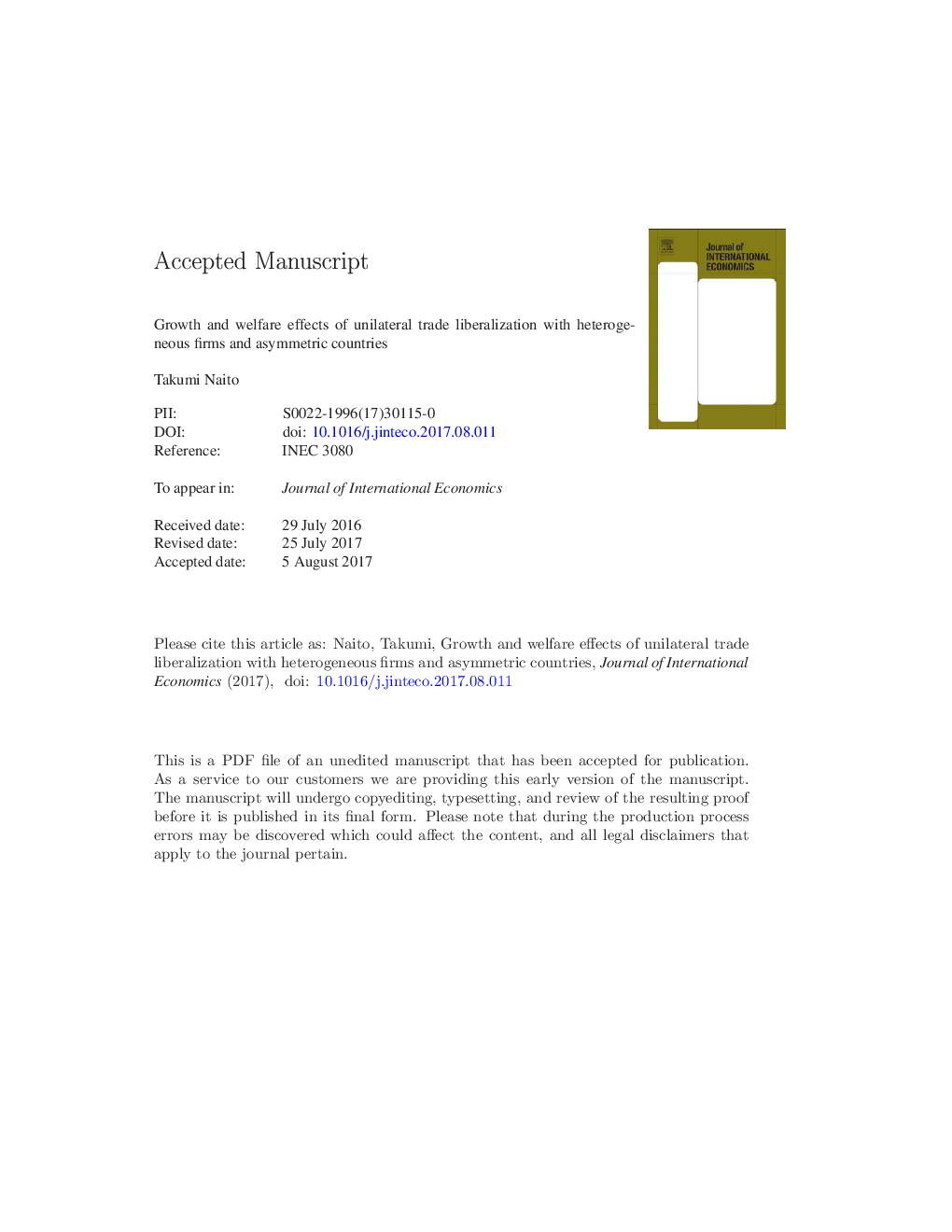| Article ID | Journal | Published Year | Pages | File Type |
|---|---|---|---|---|
| 5100866 | Journal of International Economics | 2017 | 15 Pages |
Abstract
How do reallocations across heterogeneous firms induced by unilateral trade liberalization affect long-run growth and welfare? To answer this question, we formulate a two-country model of endogenous growth, heterogeneous firms, and asymmetric countries. The relative wage and number of domestic varieties are endogenously determined. We show that even unilateral trade liberalization can raise the balanced growth rate. Although growth-enhancing trade liberalization is always welfare-enhancing in the symmetric country case, it does not generally ensure higher long-run welfare for at most one country because of asymmetric real wage effects caused by a change in the relative number of varieties.
Related Topics
Social Sciences and Humanities
Economics, Econometrics and Finance
Economics and Econometrics
Authors
Takumi Naito,
